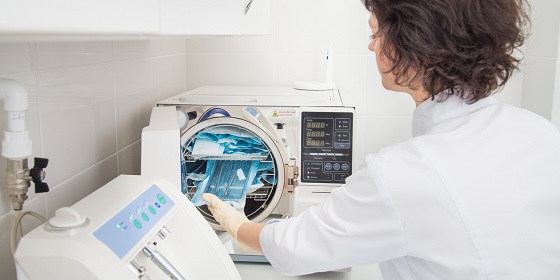Microbiological methods and sterilization

The third edition of EN ISO 11737-1 was published in 2018
There are several microbiological methods that are used in developing, validating and routinely controlling sterilization processes. These methods relate to estimation of the population of microorganisms on a product prior to sterilization, determining the bioburden and determining the presence or absence of viable microorganisms through performing a test of sterility. The principles for conducting these microbiological methods are described in the EN ISO 11737 series of standards.
The third edition of EN ISO 11737-1 was published in 2018. It replaces the second edition from 2006 and incorporates the Technical Corrigendum issued in 2007. The changes from the previous edition include:
- introducing the term ‘bioburden spikes’ as a feature of bioburden data and providing examples;
- clarifying that package testing is not typically performed unless the package is an integral part of the product;
- providing more information on the most probable number (MPN) technique and its applications;
- giving details of ways to improve the limit of detection and correct use of the data;
- adding a table with criteria for selection of an approach to estimating the efficiency of bioburden recovery and explaining the use of the correction factor;
- providing more information on the application and performance of a suitability test for a bioburden method;
- introducing rules for direct plate counts, estimated counts and counts beyond the ideal range; and
- adding clarification on where typical responsibilities reside for the manufacturer or an external laboratory
A new version of EN ISO 11737-2 on tests of sterility was published as BS EN ISO 11737-2:2020 in May. Some changes parallel those incorporated in EN ISO 11737-1. Others include adding requirements that:
- the interval between manufacturing the device and sterilizing it reflects routine processing timelines; and
- product remains immersed in the culture media
In addition, guidance has been added on:
- controlling the environment for performing tests of sterility;
- identifying the microorganism when microbial growth is detected in a test of sterility; and
- demonstrating ongoing method suitability periodically to ensure that an accumulation of minor changes has not occurred over time
New work has started to prepare EN ISO 11737-3 on bacterial endotoxin testing. This will specify general criteria for determination of bacterial endotoxins on or in raw materials, components or health care products. It applies to use of bacterial endotoxin test methods with amebocyte lysate reagents from Limulus polyphemus or Tachypleus tridentatus. It is not applicable to the evaluation of pyrogens other than bacterial endotoxin and does not include other endotoxin detection methodologies such as monocyte activation and recombinant Factor C.
This is an excerpt from the BSI medical devices white paper: Sterilization – Regulatory requirements and supporting standards. To browse our collection of medical device white papers, please visit the Insight page on the Compliance Navigator website.
Request more information today for a call back from a member of our sales team so that you can get a better understanding of how Compliance Navigator can meet your needs.
The Compliance Navigator blog is issued for information only. It does not constitute an official or agreed position of BSI Standards Ltd or of the BSI Notified Body. The views expressed are entirely those of the authors.

